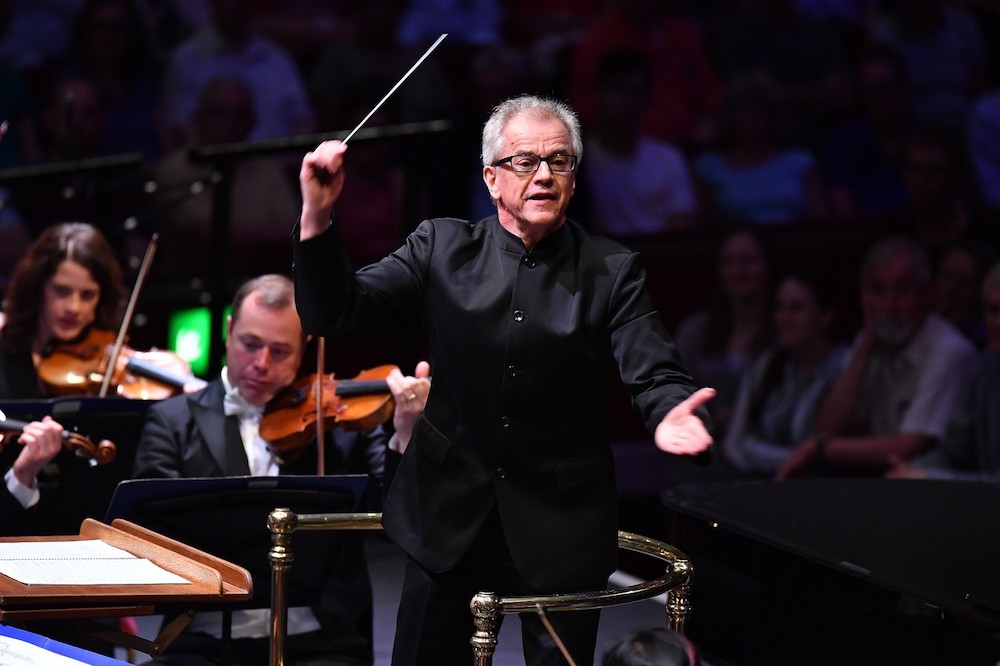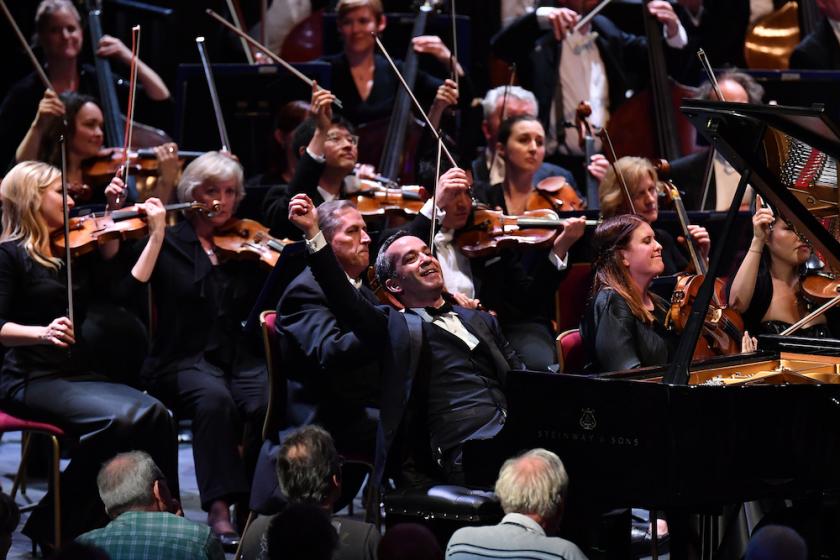Prom 31 featured an American orchestra playing an all-American programme – until the final encore dived thrillingly into a completely different musical tradition. But one of the principal features of American music – its joyous risk-taking – was undermined by conductor Osmo Vänskä’s cautious tempos, and the orchestral playing only periodically caught fire.
This started with a somewhat routine performance of Leonard Bernstein’s brilliant Candide overture. In recent times it has been heard more at the Proms as an encore than a curtain-raiser, and perhaps does work better as a glorious sign-off, when orchestra and audience are already warmed-up. I enjoyed flautist Gregory Milliren’s lively solo and timpanist Jason Arkis was commanding here, and throughout.
Indeed, Gerswshin’s Piano Concerto begins with a call-to-order on the timpani, before the first of his American dance forms – a Charleston – swings into action. Again, Vänskä (pictured below) was safe in his choice of speed and there was a lack of urgency in the piece Gershwin considered calling “New York Concerto” after that most urgent city.
The piano’s first entry, a simple syncopated melody shrouded in mysterious harmony, was played by pianist Inon Barnatan with a seriousness and intimacy. Elsewhere his playing was more flamboyant, especially in the hammering figure of the final movement toccata, but there were noticeable slips in the outer movements. He was happy to accompany the orchestra at times, not demanding the spotlight the whole time, and he did catch the extrovert spirit of the piece.  The 1925 Piano Concerto was Gershwin’s first exercise in orchestration – Rhapsody in Blue from the year below, as with his show scores, were arranged by professional orchestrators – and it is mostly successful, especially in his use of winds and trumpet at the beginning of the second movement. Principal trumpet Manny Laureano gave it plenty of vibrato in his big tune, and there was also a gorgeously bluesy oboe solo by John Snow: not something you often get to say. But in the climaxes Gershwin’s scoring gets a bit dense and sometimes the co-ordination between brass and everyone else was compromised. On the other hand, there were places where Vänskä found details I hadn’t noticed before and sent me back to the score when I got home.
The 1925 Piano Concerto was Gershwin’s first exercise in orchestration – Rhapsody in Blue from the year below, as with his show scores, were arranged by professional orchestrators – and it is mostly successful, especially in his use of winds and trumpet at the beginning of the second movement. Principal trumpet Manny Laureano gave it plenty of vibrato in his big tune, and there was also a gorgeously bluesy oboe solo by John Snow: not something you often get to say. But in the climaxes Gershwin’s scoring gets a bit dense and sometimes the co-ordination between brass and everyone else was compromised. On the other hand, there were places where Vänskä found details I hadn’t noticed before and sent me back to the score when I got home.
Barnatan’s encore was entertaining, bucking the trend for the modest and understated with a flashy take on “I Got Rhythm” by Earl Wild, very much in the tradition of Gershwin’s own improvisations on his songs.
While I welcome the programming of more Charles Ives at the Proms, I’m not sure the Second Symphony was the best choice. In contrast to The Unanswered Question, featured in Prom 9, the contemporaneous symphony has much less harmonic and textural innovation. If the Fourth Symphony wasn’t possible, perhaps we could have had Three Places in New England?
The Second Symphony is where Ives’s steeping in the vernacular of American popular music meets his training in the Germanic symphonic tradition, garnered in his years at Yale. It is an interesting conceit – Stephen Foster tunes subjected to fugal exposition and symphonic development – but the result is a bit dull, and only rescued by the few moments when the real Charles Ives stands up.
These include the cross-rhythm snare drum tattoo in the second movement, the haunting horn solo in the fourth movement and the hilarious punchline ending that never fails to delight. The fourth movement is the strongest, with a dissection and reconstruction of Foster’s Camptown Races amidst a welter of other tunes Ives knew and would have expected his audience to know, but modern audiences don’t. The orchestra was at its best in the finale and here Vänskä was most obviously enjoying himself and, for once, moving the music forward.
There was then an orchestral encore – a novelty at the Proms – in which the Minnesota Orchestra paid tribute to the music of South Africa by playing (and singing) Jaakko Kuusisto’s arrangement of “Shosholoza”, a traditional mineworker’s song. There was a real sense of enjoyment and, in the singing, full-throated commitment from all. The classical style of the arrangement could have raised the hackles of the cultural-appropriation police, but was greeted delightedly in the hall.















Add comment